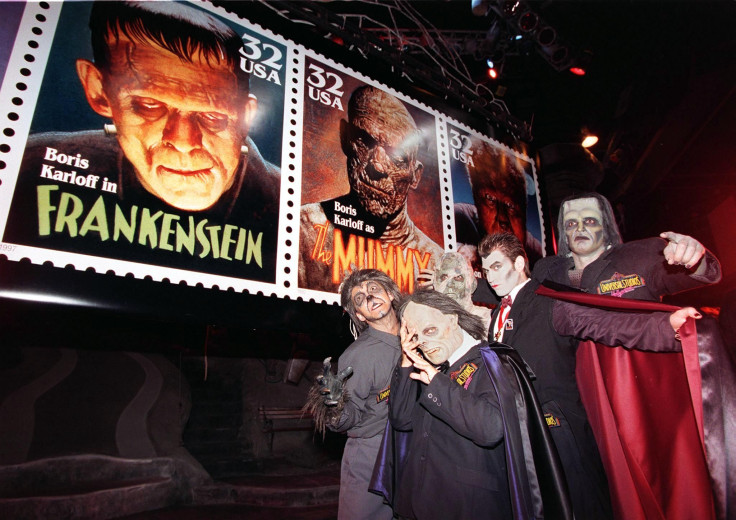Frankenstein Day: 7 Myths About The Monster On Mary Shelley's Birth Anniversary

National Frankenstein Day is an unofficial holiday celebrated Aug. 30 — the day Mary Shelly, the author of “Frankenstein” was born.
The English novelist, short story writer and dramatist, is most famous for her novel “Frankenstein,” which was written in 1816 and lauded as one of the earliest examples of science-fiction literature. It is the story of the talented but misguided Dr. Victor Frankenstein creating a monster and then, horrified by his own creature, abandoning it.
Even though Shelley’s novel have been studied by millions over the years, there exists a few details about the monster that have been distorted by popular culture. Here are seven myths about the monster:
The Monster Was Green In Color And Hideous
While popular culture depicts Frankenstein’s monster as a giant, having green-colored skin and bolts stuck in his neck, Shelley did not describe the creature quite in those terms in her novel.
In chapter 5 of the book, the monster is described as having legs “that were in proportion, and I had selected his features as beautiful. Beautiful! -- Great God! His yellow skin scarcely covered the work of muscles and arteries beneath; his hair was of a lustrous black, and flowing; his teeth of a pearly whiteness; but these luxuriances only formed a more horrid contrast with his watery eyes, that seemed almost of the same colour as the dun-white sockets in which they were set, his shrivelled complexion and straight black lips.”
“Frankenstein” Is The Name Of The Monster
Frankenstein is not the name of the monster, but his creator. And while literary experts have debated that the scientist – Victor Frankenstein – actually created the creature in his own image, he never calls it by his name in the book. The only names Frankenstein calls the monster by, after he turns on his own creation, are “devil” and “fiend,” as pointed out in “In Frankenstein's Shadow: Myth, Monstrosity, and Nineteenth-Century Writing.”
The Monster Was Taller Than Humans
While the monster was taller than most humans, he did not possess an abnormal height, according to the book. He stood at eight feet, which might be an exceptional height in humans but there are earthly beings to match that stature at present. Hence, assumption of him having inhuman height is false.
Monster Died At The End Of The Book
While many assume the monster dies after running off into the frozen arctic wasteland after his creator dies, it is never specified whether it survives in the harsh wilderness, as noted by Mental Floss.
The Monster Moved Like A Zombie
Similarities between a zombie and the monster have often been drawn by popular culture and cartoon shows. But nothing in the book suggested the creature stuck out his hands in the front and had sluggish movements resembling a zombie. On the contrary, Shelley’s novel said the monster moved at super-human speed.
The Monster Was Not Intelligent
There is nothing in the novel to suggest the monster did not have all his mental faculties intact. It was capable of analyzing its surroundings and possessed decision-making abilities. He lacks only the companionship of another being just like him. And his only acts of rage and cruelty come as a result of his loneliness.
Monster Was A Killer
According to Passion Connect, the monster had no killer-instinct in the beginning. He initially survived on berries and fruit and became a ruthless murderer only after being shunned by his creator. In order to avenge his creator’s betrayal, he goes on a killing spree.
© Copyright IBTimes 2024. All rights reserved.






















